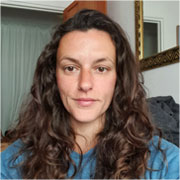Sleep is important for our mood, functioning, physical health, mental health, and cognitive abilities. When sleep is disturbed for any reason, this can have a significant impact on general well-being. Various factors can impact sleep and can lead to the development of sleep disorders, which may require professional support and intervention to treat.

What are sleep disorders?
Sleep disorders are a range of conditions that impact a person’s sleep quality and quantity, affecting mood, daytime energy levels, cognitive functioning, and physical health. [1]
Sleep disorders can be caused or worsened by various mental or physical health conditions, medications or substances, and environmental or lifestyle factors. They can be short-term or chronic and, in some cases, may require professional intervention to treat. [2]
The Diagnostic and Statistical Manual of Mental Disorders, 5th edition(DSM-5) details these conditions under the classification of Sleep-Wake Disorders, which includes ten disorders or disorder groups. [3]
Categories of sleep disorders
The ten disorders or disorder categories listed in the DSM-5 are: [3]
- Insomnia disorder
- Hypersomnolence disorder
- Narcolepsy
- Breathing-related sleep disorders
- Circadian rhythm sleep-wake disorders
- Non–rapid eye movement (NREM) sleep arousal disorders
- Nightmare disorder
- Rapid eye movement (REM) sleep behavior disorder
- Restless legs syndrome
- Substance/medication-induced sleep disorder
Common types of sleep disorders
Some of the most common types of sleep disorders include: [1][2][4][5]
- Insomnia: Insomnia can include difficulties falling or staying asleep. It may also involve waking up early and struggling to get back to sleep. This can result in excessive daytime sleepiness, causing impaired functioning, such as trouble concentrating and reduced energy. Chronic psychophysiological insomnia refers to a learned fear of sleep, causing symptoms of insomnia.
- Narcolepsy: Narcolepsy is a type of hypersomnia, involving excessive daytime sleepiness. It can include suddenly falling asleep, known as ‘sleep attacks’, often at unusual or unexpected times such as during physical activity. It can also include sudden muscle weakness, brought on by sudden emotion, such as fear, laughter, or surprise.
- Restless Leg Syndrome (RLS): RLS involves unusual or creeping sensations in the lower legs, aches & pains in the limbs, or twitching and kicking when falling asleep. These sensations and movements often disrupt sleep or prevent the individual from falling asleep, causing increased tiredness during the day. In some cases, RLS is associated with irregular levels or activity of dopamine.
- Parasomnias: Parasomnias are behaviors that occur during a state of partial arousal when the individual is not fully awake. This can include sleepwalking and sleep paralysis.
- Sleep apnea: Sleep apnea is a common type of breathing-related sleep disorder. It can cause the individual to struggle with breathing while asleep, causing gasping or snoring, which can interrupt sleep and lead to daytime tiredness. Various things can cause sleep apnea, including obstructions, heart conditions, and lung conditions.
- Circadian rhythm disorders: There are several types of circadian rhythm disorders, including jet lag disorder, shift work disorder, non-24-hour sleep-wake disorder, and irregular sleep-wake rhythm disorder. These occur when the sleep-wake cycle is disrupted, causing irregularities or disturbances in sleep patterns.
How common are sleep disorders?
Sleep disorders are common among the general population. For example: [6][7]
- Between one and two-thirds of adults report experiencing symptoms of insomnia
- Between 9-38% report experiencing sleep apnea
- Restless leg syndrome impacts 5-10% of adults
- Narcolepsy impacts around 0.05% of adults
Symptoms of sleep disorders
Symptoms of sleep disorders can vary depending on the individual, the specific type of sleep disorder, and any underlying conditions and causes. Common sleep disorder symptoms can include: [1][2]
- Lying awake at night unable to fall asleep for over 30 minutes
- Waking several times during the night
- Waking very early in the morning
- Feeling very tired throughout the day
- Needing to take frequent naps during the day
- Trouble breathing while asleep, waking up because of snoring, choking, or very loud breathing, or being told by a partner about these noises
- Jerking or twitching while asleep or falling asleep
- Vivid images or dream-like experiences while falling asleep
- Unusual sensations late at night or when falling asleep, like tingling or crawling on the skin, that can’t be relieved by massaging the area
- Sudden muscle weakness
- Feeling paralyzed when first waking up, or as though a heavy object is sitting on the chest or body
Causes of sleep disorders
Many different factors and conditions can cause or worsen sleep disorders, including: [2][6][7]
- Physical health: Various physical health conditions can impact sleep quality and quantity, including lung or breathing conditions, cardiac issues, and pain conditions.
- Mental health: Many sleep disorders are caused or worsened by psychological symptoms and conditions, such as depression, anxiety, and stress-related issues.
- Medications: Medications and substances can impact sleep. Some medications may cause excessive drowsiness and fatigue, increasing the need for sleep, while others may contribute to symptoms of insomnia.
- Genetics: In some cases, genetics can contribute to the development of a sleep disorder.
- Lifestyle: Lifestyle choices and events can contribute to sleep disorders, such as consuming large quantities of caffeine or alcohol, regularly traveling and experiencing jet lag, or working irregular shift patterns or night shifts.
- Age: Some people may find that, as they age, they get fewer hours of restful sleep or are woken more easily from shallow sleep.
What role do circadian rhythms play in sleep disorders?
Circadian rhythms are 24-hour rhythms, also referred to as body clocks, that control the regulation of various functions. The sleep-wake cycle is one circadian rhythm, which helps promote sleep and alertness. It is heavily influenced by lightness and darkness, with natural light triggering the body to feel awake and alert, and darkness triggering the release of melatonin, which causes the body to feel sleepy. [5]
Various environmental, genetic, and lifestyle factors can impact circadian rhythms, potentially causing disruptions in the sleep-wake cycle. If this occurs, sleep patterns can be altered, which can lead to a sleep disorder. Common factors that can cause these disruptions include jet lag from traveling across time zones and working night shifts. [1][8]
How much sleep is considered healthy?
Generally, a healthy amount of sleep for adults is between seven and nine hours per night. This can vary depending on the individual, their age, health, and lifestyle. [2]
The amount of sleep an individual needs changes as they age, gradually decreasing in adulthood. For example, an infant under 12 months old needs between 12-16 hours of sleep per 24 hours, and a school-age child of 6-12 years old requires 9-12 hours. By the age of 18, individuals will require around seven hours of sleep.[6]
How are sleep disorders diagnosed?
Individuals experiencing issues with sleep may wish to consult with a medical professional for advice or treatment. When diagnosing a sleep disorder, doctors will enquire about: [2][4]
- Mental and physical health history, including recent or current conditions
- Details about sleep hygiene and routines
- Recent quality and quantity of sleep
- Lifestyle, career, and travel
- Energy levels and concentration during the day
- Specific sleep-related symptoms experienced recently
The doctor will likely conduct a physical health exam and mental state examination, to determine if sleep issues are associated with a health condition and to rule out any other disorders. They may wish to conduct a sleep study to identify sleep disturbances and to monitor brain waves, eye movement, breathing, and heart activity during sleep. [2]
Treatment for sleep disorders
Treatment for sleep disorders will differ depending on the cause, physical and mental health, and the level of impact on quality of life and functioning.
Medications
In some cases, medications may be prescribed to help manage the causes or symptoms of a sleep disorder. This can include: [2][4][7]
- Sleeping pills: Tranquilizers or sedatives can be used to help individuals fall asleep. This can include benzodiazepines, such as alprazolam and triazolam, and ‘Z’ drugs, such as zolpidem and zopiclone. Typically, these treatments will only be used short-term, for a few days or weeks.
- Melatonin: Melatonin is a natural chemical released in the body, prompted by darkness, that helps promote sleep. Melatonin supplements can be used to trigger sleepiness, which may help alleviate symptoms of insomnia or other sleep disorders.
- Antidepressants: Antidepressants might be prescribed to help treat underlying mental health conditions such as depression and anxiety that can contribute to sleep disorders.
- Stimulants: Stimulant medications such as Adderall and Ritalin might be prescribed to individuals with narcolepsy or excessive daytime sleepiness, to help improve alertness and prevent sleep attacks.
Psychological therapies
Some people with a sleep disorder might benefit from psychological therapy, such as cognitive behavioral therapy (CBT). This can help treat underlying mental health conditions that have contributed to sleep disorders, alter behaviors and attitudes around sleep and sleep hygiene, and learn coping skills to manage stress and anxiety symptoms associated with sleep deprivation. [2][8]
A significant percentage of sleep disorders are caused or worsened by mental health symptoms, so receiving psychological interventions can partially or entirely alleviate the impact of these conditions. [7]
Physical health treatments
Individuals with underlying physical health issues that contribute to sleep disturbances should receive appropriate physical health treatment to manage their symptoms. For example, people with breathing-related sleep disorders, such as sleep apnea, might benefit from a CPAP (continuous positive airway pressure) machine, to improve their airflow while sleeping. [2]
Self-care
Various self-care techniques can be implemented into a daily routine to improve physical and mental well-being and sleep quality. This can include: [2][8]
- Eating a healthy diet
- Drinking plenty of water and staying hydrated
- Engaging in physical exercise
- Using relaxation and breathing exercises
- Yoga and meditation
Sleep hygiene
Forming and maintaining good sleep hygiene habits can have a significant impact on sleep quality and quantity for individuals experiencing sleep disorders. This can include: [7][9]
- Ensuring the bedroom is dark and quiet when going to sleep
- Going to bed and waking up at the same time each day
- Avoiding screens before bed, such as televisions and phones
- Avoiding caffeine and alcohol in the evening or before bedtime
- Being exposed to natural sunlight during the day, particularly first thing in the morning
- Engaging in relaxing and calming activities before bed, such as reading, meditating, or taking a bath
- Avoiding or limiting daytime naps



-guide-detail.jpg?v=1756808550)
